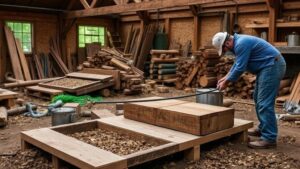Mining Historical Farm Supply Co-op Records for Rural Relic Leads
Introduction
The historical examination of farm supply co-operative records serves as a significant resource for uncovering rural relics that contribute to a deeper understanding of agricultural history. These records not only provide insight into the economic practices of rural communities but also shed light on social structures, community networks, and the evolution of agricultural practices in specific regions. This article aims to explore methodologies for mining these historical records to identify leads on rural relics.
Historical Context of Farm Supply Co-ops
Farm supply co-operatives in the United States developed significantly during the 20th century, particularly in the post-World War II era. e organizations aimed to provide farmers with essential supplies such as seed, fertilizer, machinery, and more at reduced costs through collective purchasing. According to the USDA, there were over 2,900 farmer co-ops in operation by 2002, demonstrating their pivotal role in rural economies.
The Emergence of Co-operatives
The rise of co-operatives can be attributed to the economic challenges faced by farmers in the early 1900s, exacerbated by fluctuating commodity prices and the monopolization of supply markets by larger corporations. Historical records from the National Co-operative Business Association indicate that by 1940, over 1,000 co-operatives were operational, enabling farmers to pool resources and mitigate costs.
Identifying Historical Records
Mining historical farm supply co-op records requires an understanding of where to locate these documents and how to interpret them effectively. Key sources include:
- County Archives: Many county archives house records of local co-operatives, including meeting notes, financial statements, and membership lists.
- University Libraries: Academic institutions often maintain special collections of agricultural history that include co-op materials.
- State Agricultural Departments: These departments may possess historical documentation that pertains to agricultural co-operative legislation and performance.
Mining Methodologies
The process of mining these historical records can be methodical. First, researchers must establish a clear objective, such as identifying specific relics or trends. The following methodologies are recommended:
Data Compilation
Data compilation involves gathering various types of records to create a comprehensive database. Researchers can track changes in membership, financial health, and product sales over time. For example, a longitudinal study on the Farmers Union Co-operative Association from 1945 to 1965 in Minnesota found that membership increased by 150%, illustrating growing community reliance on co-operatives.
Pattern Identification
Identifying patterns within the data is crucial for understanding larger trends. By examining sales records, researchers can ascertain which products were in high demand during various decades. For example, a spike in fertilizer sales during the 1950s correlates with the Green Revolution, underscoring the impact of co-ops on agricultural modernity.
Case Studies
Several case studies highlight successful projects where historical records led to significant findings related to rural relics.
The Southern Minnesota Co-operative
A research initiative into the Southern Minnesota Co-operative unveiled the transformation of local farming equipment from manual to mechanized tools, significantly impacting productivity. The records indicated transitions in machinery sales, leading to the identification of remaining old machinery used by early adopters in the area.
The Midwest Grain Alliance
Another pertinent study focused on the Midwest Grain Alliance, where archival records revealed local grain storage practices pre-1970s. Documentation of grain silo construction provided leads for historical preservation efforts aimed at restoring these structures as rural heritage sites.
Conclusion
The mining of historical farm supply co-op records is a critical undertaking that contributes both to the preservation of rural heritage and the understanding of agricultural evolution. Through detailed methodologies and the exploration of historical case studies, researchers can uncover valuable insights into rural relics, informing both academic scholarship and community initiatives.
Actionable Takeaways
- Engage with local historical societies to locate archived co-operative records.
- Use data compilation techniques to build databases from identified records.
- Analyze patterns to draw correlations between agricultural practices and socio-economic changes.
By applying these strategies, researchers can effectively trace the impact of farm supply co-operatives on rural life and contribute to preserving an important aspect of agricultural heritage.

